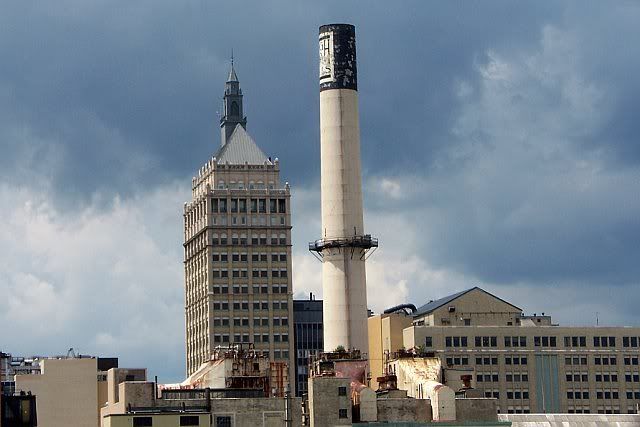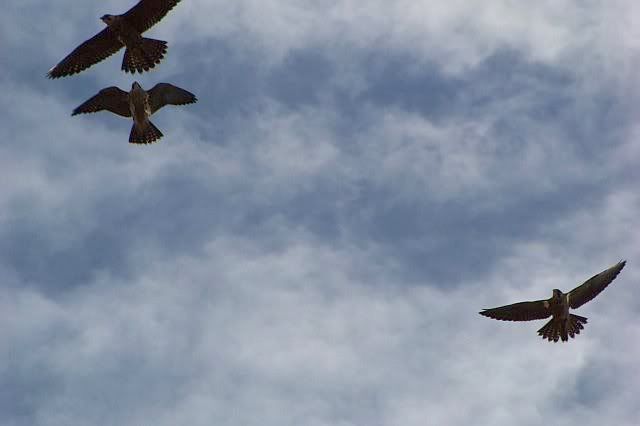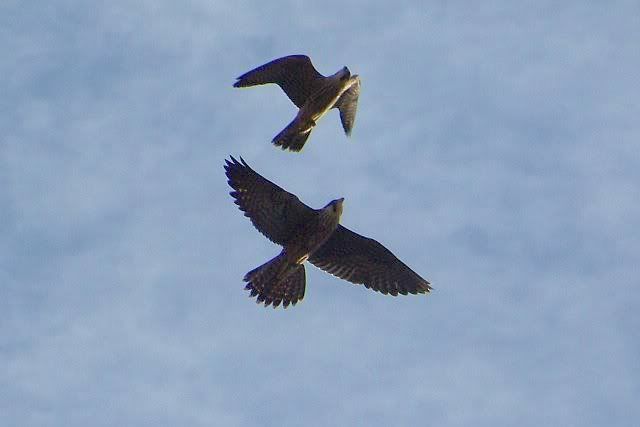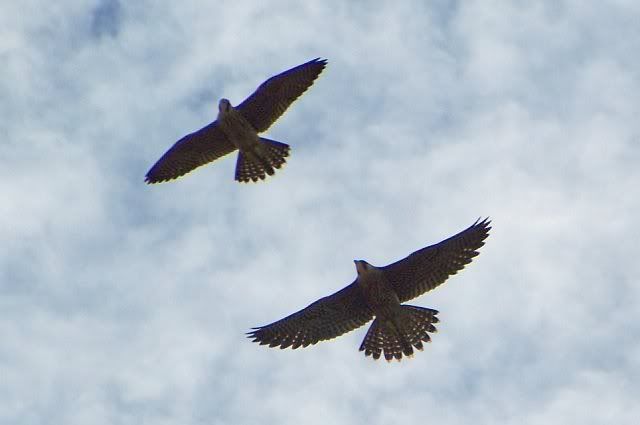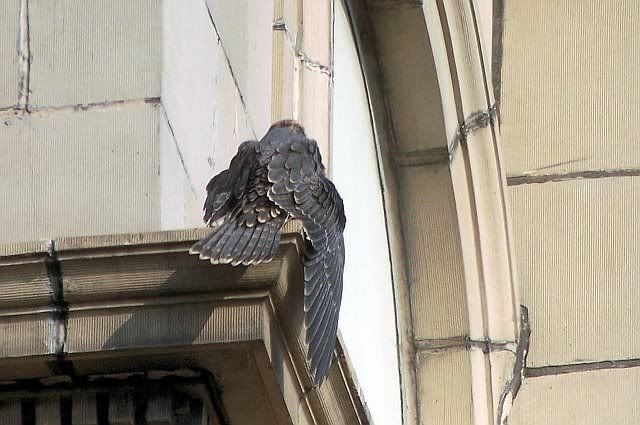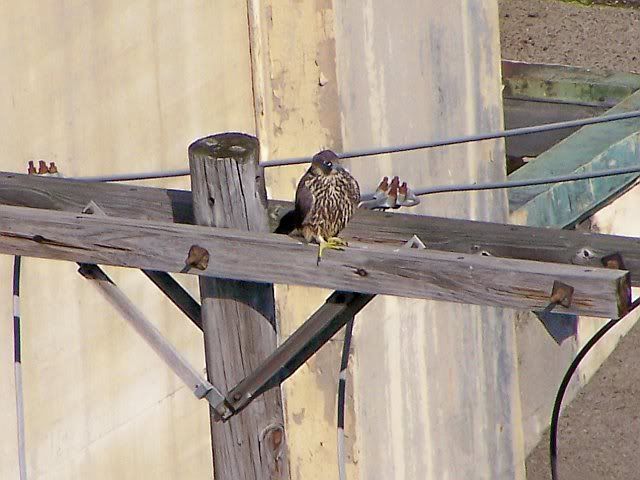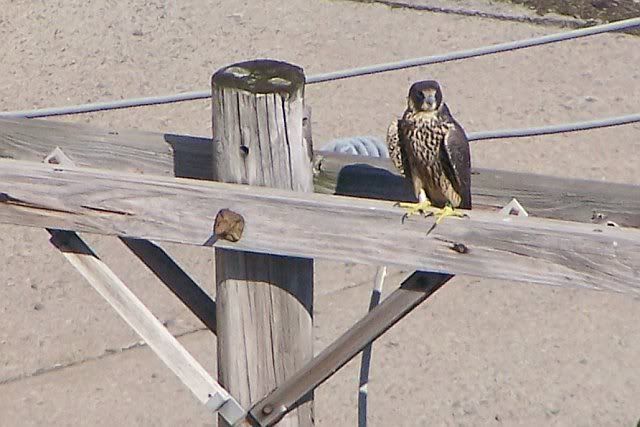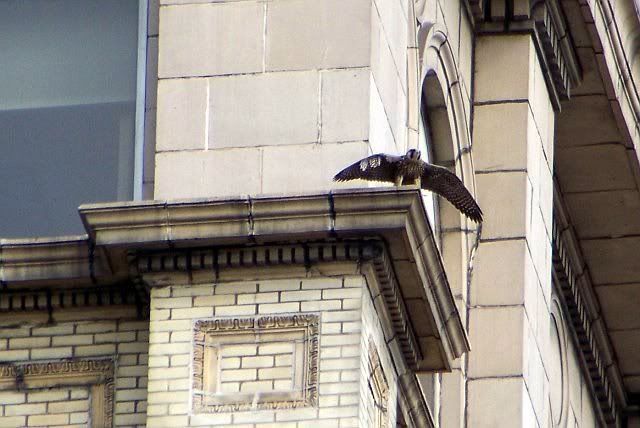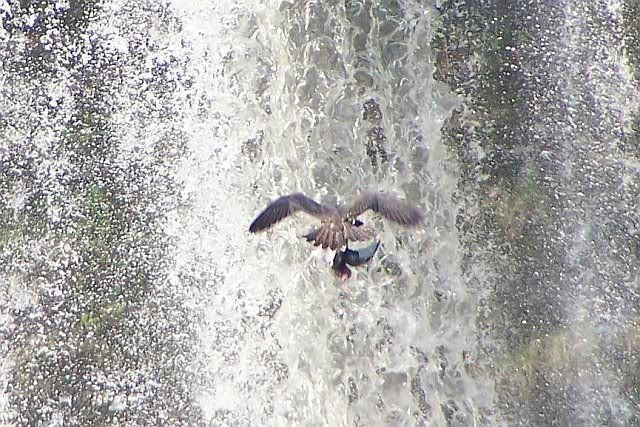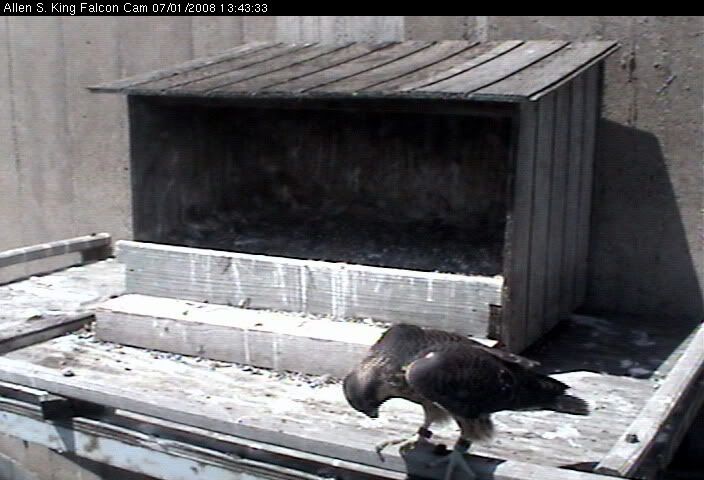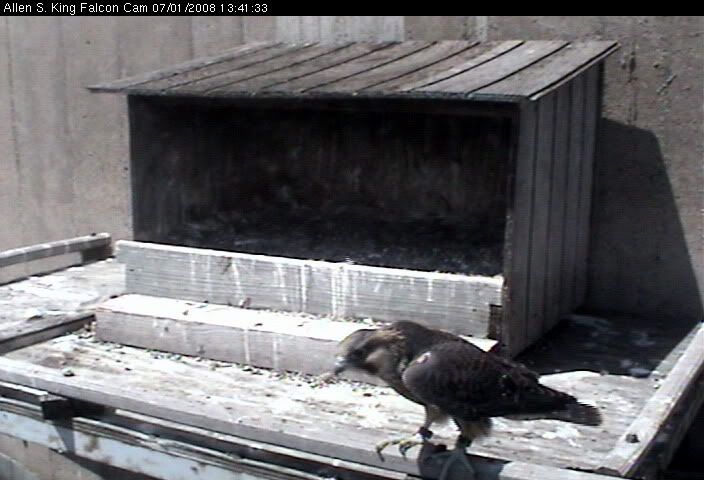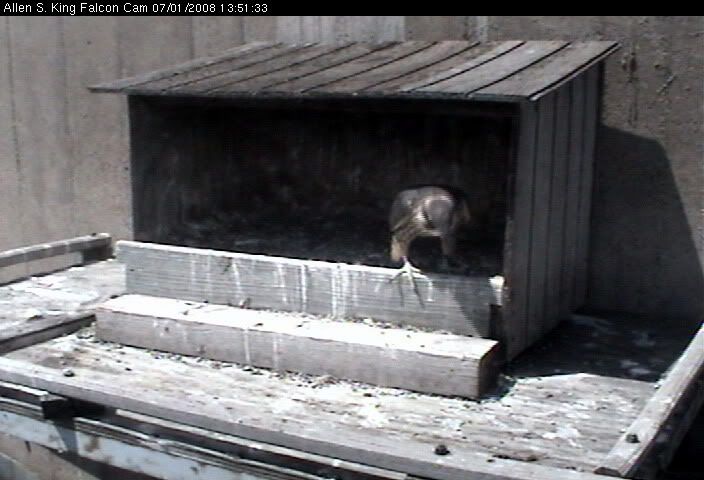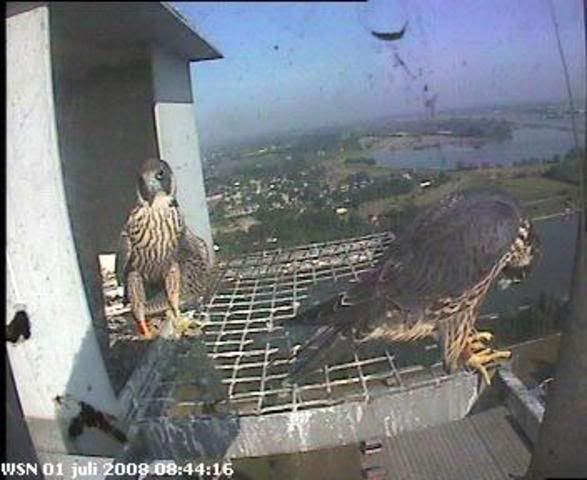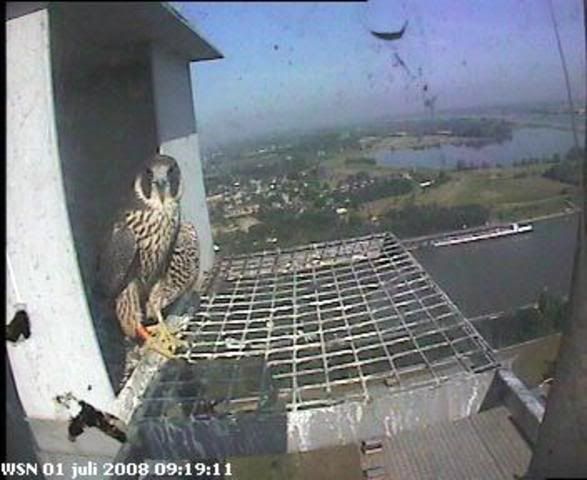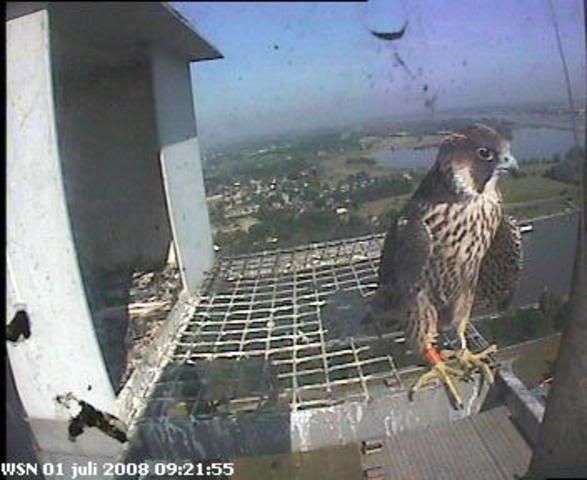A peregrine falcon can sit for hours on a thin wire or an antenna and not fall off. He even sleeps thight and pulls one foot up into it's feathers. Doesn't he have to use force to stay put? How can he sleep when he has to do that.
This is one of the questions I received.
So what is the anwer?
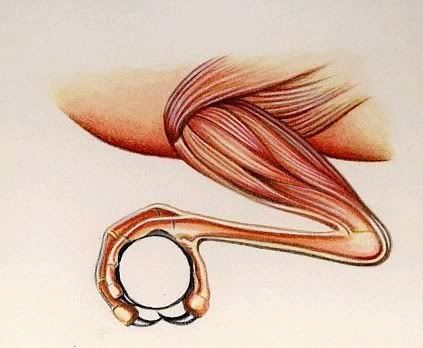
The anatomy of the peregrine foot is special and totally opposite to ours where muscles and tendons are concerned. The muscles and tendons in the foot clutch the foot automatically. The peregrine has to make an effort to open the foot.
When we want to close our hand we have to actively clutch our fingers into our palm. The peregrine falcon however has to make an effort to open it's foot.
When the peregrine lands on an antenna it's feet automatically clutch around it with a very firm grip. That is the reason why they can sleep for hours on a very thin line or thread without falling off. Like all birds can.
When eyases grow this muscle tendon system is not fully operative yet. We can observe the eyases and see how they sit on their tarsi with open feet. The more they grow into juvies the more the anatomy of the foot reaches it's completion as well. When they are around 28 days we can see how they start training these feet. They make fists and open the foot again.
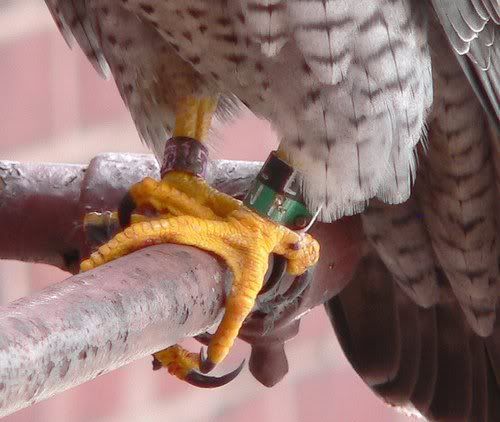
So the eyases before fledging have to train the foot to open it, not to close it, but to open it. To get the grip of it in a way.
The anatomy of the leg and of the foot makes walking for a peregrine falcon more of a wiggeling, a waddle. When the couple changes shift in breeding we can see how much effort they have to do to step carefully between the eggs without breaking them. They are very clumsy because of this totally different muscle-tendon anatomy.
And, this strong fist is the weapon to knock pigeons dead out of the sky. The eyases on the ledge opening and closing their feet are exersising, like a fighter before a match.
The peregrine falcon is famous for the way it catches it's prey. After stooping, it knocks it's prey dead. For many many years it was thought that the peregrine grabbed it's prey with an open foot, but slow motion video's have shown different. It's a very fast movement of tumbling forward, a blow with the fist and grab.

Imagine, if you have ever seen a stoop you know how fast the peregrine flies, It's incredible really! It goes zoefff and gone she is. I saw S2 catch a pigeon: unbelievable. Right beside me. The juvies where teasing one and S2 took off from the tower and before you know it she had the pigeon,.
They can reach a speed of over 350 km/h, but usually, in horizontal flight it's closer to 150-180 km/h. Imagine the blow on impact: it brings instant death. And if not, the prey is killed by biting the spinal cord.
So the Peregrine falcon is a kind of Rocky, better that is. it knocks it's prey dead.
All the other raptors grab their prey and cause fatal wounds with their claws and nails and pierce a prey. The peregrine brings instant death. It does seem a bit more humane for the instant kill as opposed to the type of kill a hawk would do with its prey for instance.

















